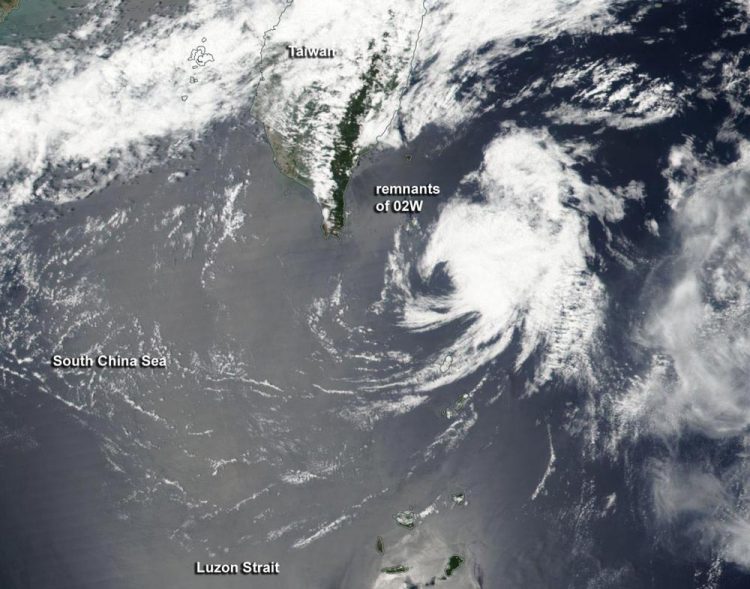NASA sees the end of ex-Tropical Cyclone 02W

On April 20, NOAA-NASA's Suomi NPP satellite saw the remnants of Tropical Cyclone 02W as it moved through the Luzon Strait. Credits: NASA/NOAA
On April 19, 2017 at 0600 UTC (2 a.m. EST), the Joint Typhoon Warning Center noted that former Tropical Cyclone 02W was no longer suspect for tropical cyclone formation.
The low pressure area had moved into an area of strong vertical wind shear, just southeast of Taiwan and was being torn apart.
The Visible Infrared Imaging Radiometer Suite (VIIRS) instrument aboard NOAA-NASA's Suomi NPP satellite captured a visible image of the remnants after the system moved north-northeast of the northern Philippines and through the Luzon Strait.
The VIIRS image showed that strong wind shear had pushed the bulk of clouds and showers east-northeast of what was left of the center of circulation.
The strong vertical wind shear took its toll on the system and the remnants dissipated southeast of Taiwan.
###
Rob Gutro
NASA's Goddard Space Flight Center
Media Contact
All latest news from the category: Earth Sciences
Earth Sciences (also referred to as Geosciences), which deals with basic issues surrounding our planet, plays a vital role in the area of energy and raw materials supply.
Earth Sciences comprises subjects such as geology, geography, geological informatics, paleontology, mineralogy, petrography, crystallography, geophysics, geodesy, glaciology, cartography, photogrammetry, meteorology and seismology, early-warning systems, earthquake research and polar research.
Newest articles

Properties of new materials for microchips
… can now be measured well. Reseachers of Delft University of Technology demonstrated measuring performance properties of ultrathin silicon membranes. Making ever smaller and more powerful chips requires new ultrathin…

Floating solar’s potential
… to support sustainable development by addressing climate, water, and energy goals holistically. A new study published this week in Nature Energy raises the potential for floating solar photovoltaics (FPV)…

Skyrmions move at record speeds
… a step towards the computing of the future. An international research team led by scientists from the CNRS1 has discovered that the magnetic nanobubbles2 known as skyrmions can be…




















